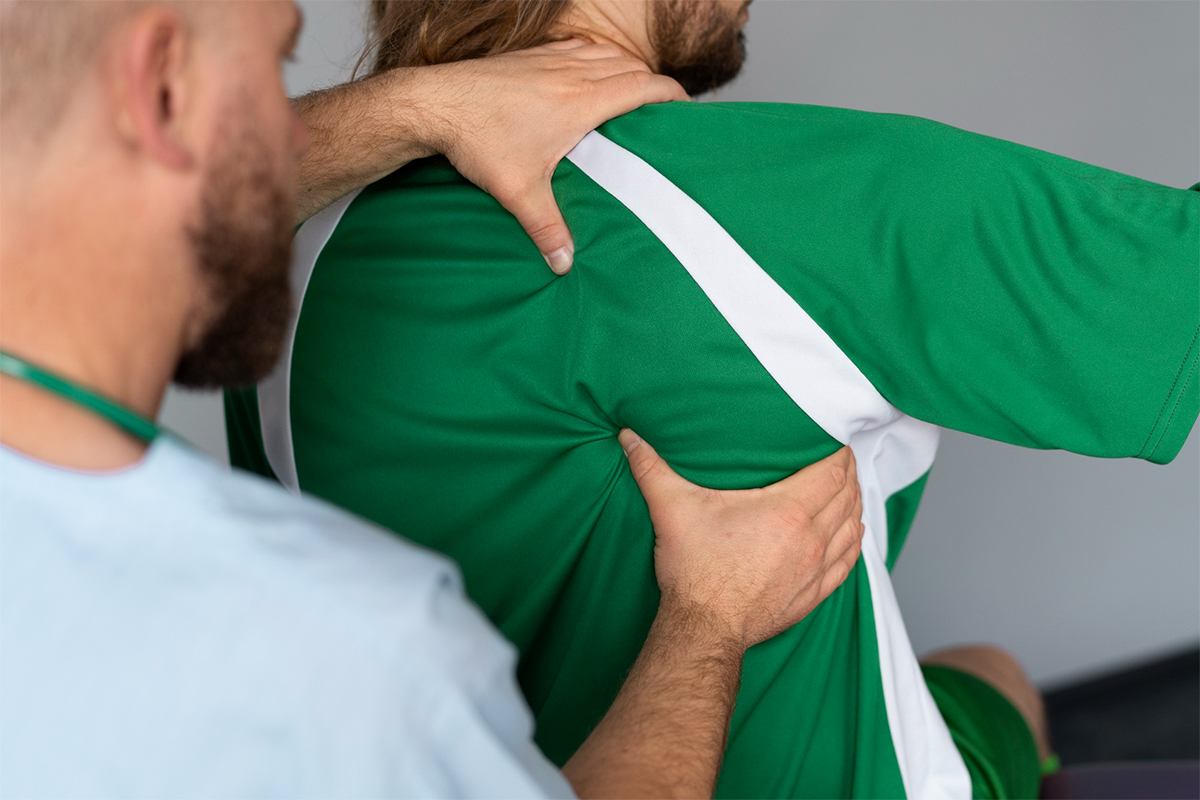Chiropractor vs Physical Therapist: Which One Is Right For You After a Car Accident?

Car accidents can be traumatic experiences leaving you with months, years or a lifetime of recovery. By consulting with a healthcare professional, you can receive a proper diagnosis and appropriate treatment, alleviating concerns about hidden injuries and potential complications. After the initial visit, you will likely need more follow-up appointments to heal. The question is, would a physical therapist be the best choice for you, or would a chiropractor bring about a better result? Maybe both?
Chiropractic Care Vs. Physical Therapy After a Car Accident
Two key professionals commonly involved in post-accident care are chiropractors and physical therapists. These healthcare providers possess distinct skill sets and expertise that complement each other in addressing the varying needs of patients.
Chiropractors specialize in spinal manipulation and focus on treating musculoskeletal conditions, while physical therapists are experts in restoring movement and functionality through exercise and physical modalities.
When deciding whether to see a chiropractor or physical therapist after an auto accident injury, there are several key factors to consider. The specific goals each professional aims to achieve also vary.
Chiropractors strive to alleviate pain, restore range of motion, improve nervous system function, and enhance overall well-being. Physical therapists, on the other hand, aim to increase strength and flexibility, improve motor skills, enhance balance and coordination, and promote a safe and speedy return to daily activities.
Both chiropractors and physical therapists offer unique benefits to patients. Chiropractic care can provide immediate pain relief and improve joint mobility, while physical therapy can help prevent long-term disabilities and strengthen injured areas. Collaborative treatment, incorporating both chiropractic and physical therapy, can lead to enhanced recovery and optimal results.
Chiropractic Care After a Car Accident
Chiropractic care is a natural method of supporting the body’s ability to heal itself. It emphasizes the relationship between the spine and the nervous system, recognizing that any misalignments in the spine can disrupt the normal functioning of the body and lead to pain and other health issues.
The cornerstone of chiropractic care is spinal adjustments, which involve the skilled manipulation of the spine to correct misalignments and restore proper alignment. This hands-on approach aims to improve the function of the nervous system, relieve pain, and optimize overall health.
In addition to spinal adjustments, chiropractors may also use electric muscle stimulation to help relax muscles, reduce inflammation, and promote healing. This technique involves using low-frequency electrical currents to stimulate the muscles, improve blood flow, and promote tissue repair.
Rehabilitative exercises are often advised by chiropractic providers. These exercises are designed to strengthen the muscles, improve flexibility, and enhance overall function. They help to restore balance and stability, reducing the risk of further injuries and providing long-term pain relief.

Physical Therapy After a Car Accident
One of the key benefits of physical therapy is its ability to provide pain relief. Car accident injuries often lead to acute pain, which can be debilitating. Physical therapy helps in managing and reducing pain through various techniques such as manual therapy, therapeutic exercises, and modalities like heat and cold therapy. By targeting the source of pain, physical therapists can provide some relief, enabling victims to engage in daily activities and return to normal life sooner.
Without proper rehabilitation, secondary issues may develop, such as scar tissue formation, joint stiffness, and muscle imbalances. These can delay the recovery process and impede the return to a normal lifestyle. By actively working with physical therapists, patients benefit from targeted interventions that accelerate healing, reduce the risk of complications, and allow them to regain their pre-accident level of functioning.
What Might Influence the Choice Between Chiropractic Care and PT?
Some may prefer physical therapy because medical insurance is more likely to cover the care, but after a car accident, the insurance from the accident should cover either service.
Often, the days and weeks following a car accident are very intense, with insurance phone calls, hospital visits, medical bills, and pain medications often prescribed. The schedule for physical therapy can be very intense in the midst of that, with visits typically occurring three times per week for months. In addition to the schedule, PT can be physically quite grueling, and though it may produce results, it can be a long road to get there.
Chiropractic care also requires a long-term commitment to ongoing visits, but usually requires less visits per week. It may also produce some soreness after an adjustment but does provide more effective treatment for whiplash, a common injury in car accidents. Both PT and chiropractic care are worth trying, in order to determine which therapy will be more effective for your situation.

FAQs
Q. Do I need a referral to see a chiropractor or a physical therapist?
You typically do not need a referral to see a chiropractor. In many states, a referral from a physician may be required to see a physical therapist, although some states allow direct access to physical therapy without a referral. [1]
Q. Can chiropractic care and physical therapy be combined?
Yes, combining chiropractic care and physical therapy can be beneficial. Chiropractic adjustments can help with spinal alignment and immediate pain relief, while physical therapy can provide long-term rehabilitation and strengthening of the muscles and joints. This combined approach can offer a more comprehensive treatment plan. [2]
Q. Are there any risks associated with chiropractic care and physical therapy?
Both chiropractic care and physical therapy are generally safe when performed by licensed professionals. chiropractic adjustments, particularly spinal manipulations, carry a small risk of complications such as worsening pain or, very rarely, strokes. Physical therapy risks are generally low but can include temporary discomfort or soreness from exercises and manual therapy. [3]
Sources:
[1] Chiropractic vs. Physical Therapy: What’s the Difference? (n.d.). Northeast College of Health Sciences. Retrieved July 26, 2024, from https://www.northeastcollege.edu/learn/chiropractic-vs-physical-therapy-whats-the-difference
[2] Physical Therapy or Chiropractic: Why Not Both? – Performance Health Academy. (n.d.). Www.performancehealthacademy.com. https://www.performancehealthacademy.com/physical-therapy-or-chiropractic-why-not-both-1.html
[3] Acharya, M., Chopra, D., Smith, A. M., Fritz, J. M., & Martin, B. C. (2022). Associations Between Early Chiropractic Care and Physical Therapy on Subsequent Opioid Use Among Persons With Low Back Pain in Arkansas. Journal of Chiropractic Medicine. https://doi.org/10.1016/j.jcm.2022.02.007





